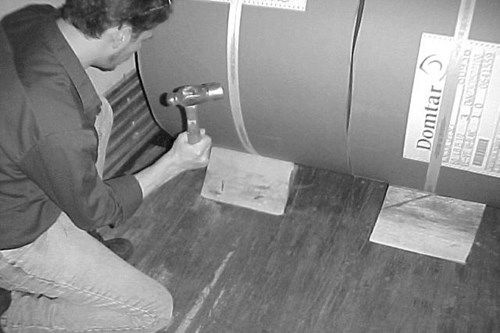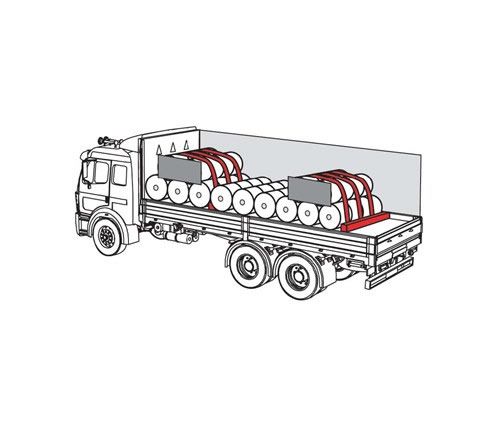Review Questions - Click On The Picture To Begin...

When loading paper rolls with eyes horizontal, which of the following is not a requirement for stacking a second layer:
- The bottom layer must extend all the way to the front.
- All the wells in the layer beneath must be filled
- Place second layer with eyes vertical.
- It must be blocked against an eye-vertical blocking roll resting on the floor of the vehicle that is at least 1.5 times taller than the diameter of the roll being blocked.
Quote From The CDL Manual:
Requirements for eyes crosswise: secure stacks of paper rolls from front-to-back movement
- Do not load paper rolls on a second layer unless the bottom layer extends to the front of the vehicle.
- Load paper rolls on higher layers only if all wells in the layer beneath are filled.
-
Secure the foremost roll in each upper layer (or any roll with an empty well in front of it) against forward movement:
- Either by placing it in a well formed by two rolls on the lower row whose diameter is equal to or greater than that of the roll on the upper row.
- Or by banding it to other rolls.
- Or by blocking it against an eye-vertical blocking roll resting on the floor of the vehicle that is at least 1.5 times taller than the diameter of the roll being blocked.
Next
When securing paper rolls with eyes crosswise, which of the following can be used to prevent side-to-side shifting when there is more than 8 inches of space to the wall?
- Any of these methods are acceptable.
- Void fillers.
- Friction mats.
- Tiedowns.
Quote From The CDL Manual:
Requirements for eyes crosswise: prevent rolls from shifting toward either wall
If there is more than a total of 203 mm (8 in) of space between the ends of a paper roll and other rolls or the walls of the vehicle, use one of these methods:
- Void fillers (such as honeycomb)
- Blocking
- Bracing
- Friction mats
- Tiedowns
Prev
Next
When securing paper rolls with eyes horizontal, which of the following should be used to secure the rear-most roll?
- All of these are acceptable
- Wedges or chocks secured by some means in addition to friction.
- Secure roll against rear doors.
- Secure blocking against rear doors.
Quote From The CDL Manual:

Note: Chocks, Wedges, or Blocking Securing the Front or Rear Roll - Hold in place by some means in addition to friction so they cannot become unintentionally unfastened or loose while the vehicle is in transit. This is often accomplished with nails.
Requirements for eyes crosswise: secure rearmost roll
Do not secure the rearmost roll with:
- Either the rear doors of the vehicle or intermodal container
- Or blocking held in place by those doors.
Prev
Finish
Please select an option









 TT On Facebook
TT On Facebook